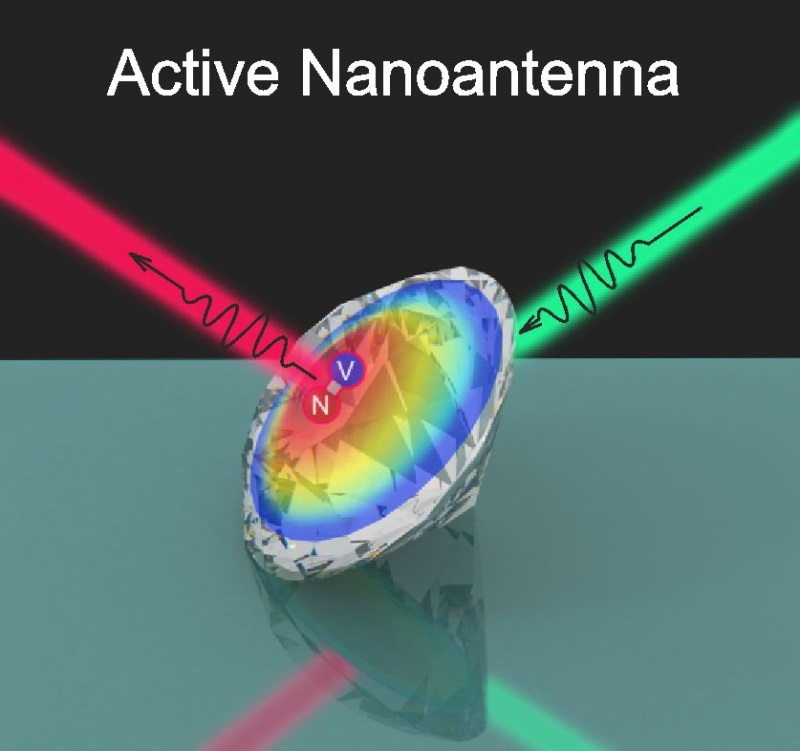27 April 2018
A research group from ITMO University has developed the first-ever controlled nanodiamond-based light source. Experiments have shown that diamond shells can double the emission speed of light sources and help control them without any additional nano- and microstructures. This result was achieved due to artificially created defects in the diamonds’ crystal lattice. Results of this research are important for the development of quantum computers and optical networks. The study is published in Nanoscale.
One of the key areas of modern nanophotonics is the design of active dielectric nanoantennas, which are controlled photonic sources. As a base for nanoantennas, scientists usually use plasmonic metal nanoparticles. However, optical loss and heating rates of these particles encourage scientists to look for alternatives. For example, ITMO University researchers are actively working in the field of dielectric nanophotonics: they create nanoantennas based on perovskites and silicon. Recently, members of ITMO University’s International Laboratory for Nanophotonics and Metamaterials developed a new concept of active dielectric nanoantennas based on nanodiamonds.
Nanodiamonds are carbon nanostructures with unique properties. They have a sufficiently high refractive index, high thermal conductivity, and low interaction activity. The scientists used nanodiamonds with so-called nitrogen-vacancy centers (NV-centers). These are created artificially by removing carbon atoms from a diamond’s crystal lattice. The opened vacancy is then linked to an implanted nitrogen atom. The electron spin of such NV-centers is easily controlled by light, and that electron spin can be used to record quantum information.
Scientists from ITMO University studied the optical properties of nanodiamonds and found that their radiation can be enhanced by combining the NV-center luminescence spectrum with optical Mie resonances of diamond nanoparticles. This can be achieved at a certain position of the NV-center and the appropriate particle size. This way one can increase the nanodiamond’s Purcell factor. This indicator is used to estimate how a diamond shell affects the rate of spontaneous emission of the light source. If the Purcell factor increases, the luminescence fade time reduces while the signal itself becomes stronger and much easier to read.
The researchers emphasize that this effect is achieved by using only properties of nanodiamonds.
“Usually, to accelerate the radiation, one has to create a complex system of resonators. But we managed to achieve similar results without any additional structures. We proved experimentally that the fading of luminescence can be sped up by at least two times using just simple physics," says Dmitry Zuev from The International Laboratory for Nanophotonics and Metamaterials.
In fact, experiments were carried out on nanodiamonds with multiple NV-centers. Researchers also developed a theoretical model for the behavior of single photon sources in a diamond shell. Calculations showed that the speed of light emission, in that case, can be increased by several dozen times.
"Today getting a single photon from one NV-center in a nanoantenna is a rather difficult task. In order to implement such active nanoantenna in logic elements, for example, we need to know how to manage their emission. In perspective, our concept will help to effectively manage single photon emission sources. It is very important for the development of quantum computers and optical communication networks," notes Anastasia Zalogina, lead author of the article, and a member of the International Laboratory for Nanophotonics and Metamaterials.
Reference: Purcell effect in active diamond nanoantennas. Anastasiia Zalogina et al. Nanoscale. 17 April, 2018.













